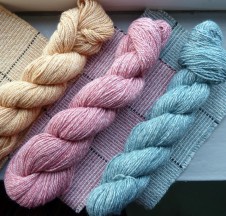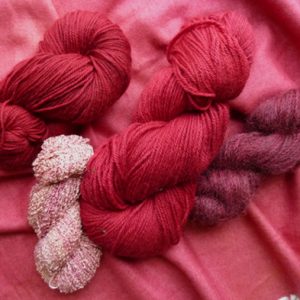I’m the guest blogger for Cotton Clouds this month
I’m the guest blogger for the month at Cotton Clouds. Check out their new EZ Dye kits using a non-toxic pretreated cotton that takes natural dyes beautifully with no mordanting! The colors are so interesting – a slightly different palette than other natural dyes on cotton – these tones will go beautifully with most interior colors. The toothy cotton yarn is perfect for weaving 6 generously sized table napkins that are ideal for summertime picnics or casual dining. Check out the EZ Dye Cotton kit on the Cotton Clouds website. It’s a fun and easy project!





